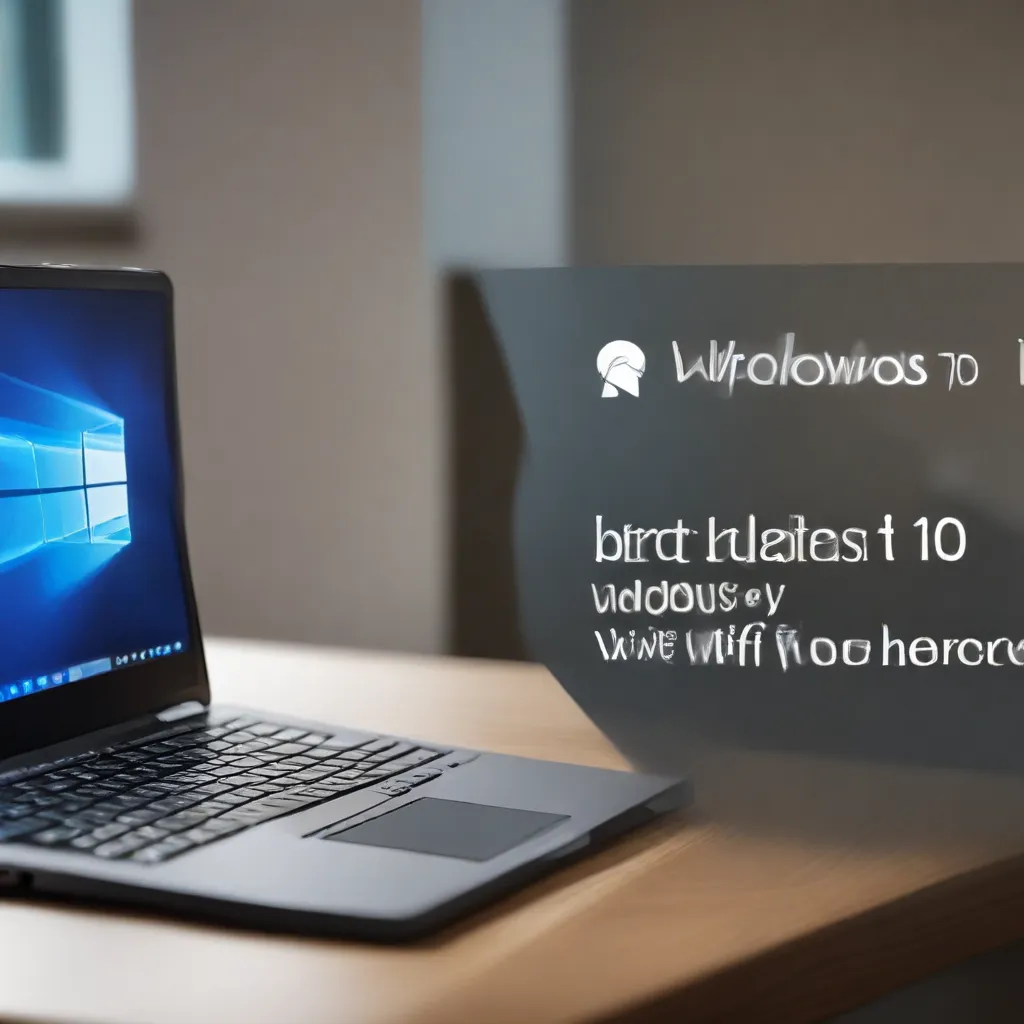Losing Your WiFi Connection? Don’t Panic!
It’s happened to all of us – you’re happily browsing the internet, streaming your favorite shows, or sending an important email, when suddenly, the dreaded “No Internet Connection” icon pops up on your Windows 10 taskbar. Your heart sinks as you realize you’ve been cut off from the digital world. But fear not, my friend! I’ve been there too, and I’m here to guide you through the process of troubleshooting your Windows 10 WiFi connectivity problems, so you can get back online faster than you can say “Where’s my ethernet cable?”
Start with the Basics
The first step in any tech troubleshooting is to start with the obvious – make sure your WiFi is actually turned on. Sounds simple, right? But you’d be surprised how many times that’s the culprit. Simply click on the network icon in the taskbar and ensure the WiFi toggle is set to “On.” While you’re at it, also check that your device isn’t in Airplane Mode, which can disable your wireless connections.
If your WiFi is already on, the next step is to see if your PC can detect any available networks. If you don’t see any familiar network names in the list, it’s possible your router’s SSID (network name) is not being broadcast. In that case, you’ll need to manually connect by selecting “Hidden network” and entering the network details.
Reboot for the Win
Still no luck? Time to pull out the old reliable – the good ol’ reboot. Turning your router and modem off and on again can sometimes work wonders. Unplug the power cables, wait 30 seconds, then plug them back in. This helps refresh the connection between your devices and your internet service provider (ISP).
While you’ve got those devices unplugged, take a moment to check the physical connections. Make sure the ethernet cables are securely plugged in and there are no loose or damaged ports. A simple loose connection could be the culprit behind your WiFi woes.
Diagnose the Issue
Alright, so your WiFi is on, you can see networks, and you’ve rebooted the router – but you still can’t get online. Time to put on our detective hats and start narrowing down the problem.
First, let’s see if the issue is with your specific device or the network as a whole. Try connecting to the WiFi on another device, like your smartphone or tablet. If those devices can get online, the problem is likely isolated to your PC. But if no devices can connect, it’s time to dig deeper.
Run the Network Troubleshooter – this handy tool from Microsoft can help diagnose and fix common connection problems. It’ll walk you through a series of steps to identify the root cause.
If the Troubleshooter doesn’t do the trick, it’s time to break out the command prompt. Open an elevated command prompt (search for “Command Prompt,” right-click, and select “Run as administrator”) and run the following commands in order:
netsh winsock resetnetsh int ip resetipconfig /releaseipconfig /renewipconfig /flushdns
This series of commands resets your network stack, releases and renews your IP address, and flushes the DNS cache – a sort of “hard reset” for your network settings. It’s often the secret sauce that gets things working again.
Update Drivers and Reset Network
If you’re still struggling, the problem might be related to your network adapter driver. Try uninstalling the driver and letting Windows automatically reinstall the latest version. Outdated or incompatible drivers can definitely cause connectivity issues.
As a last resort, you can try a network reset. This will remove all your network adapters and settings, essentially giving you a clean slate. Just be aware that you’ll need to reconnect to your WiFi network and reestablish any other network settings afterward.
Troubleshoot Your Home Layout
One often-overlooked factor in WiFi connectivity issues is the physical layout of your home. The location of your router, the materials in your walls, and even the number of wireless devices can all impact your signal strength and reliability.
Try moving your router to a more central location, away from potential interference like microwaves, cordless phones, or even thick concrete walls. You can also experiment with switching between the 2.4GHz and 5GHz frequency bands – the higher 5GHz band often provides faster speeds but has a shorter range, while 2.4GHz has a longer reach but lower bandwidth.
If you’re still struggling with persistent WiFi problems, it might be worth consulting with an IT professional who can assess your home setup and recommend the best equipment and configuration to ensure a strong, reliable connection.
Patience and Persistence
Troubleshooting WiFi connectivity issues can be a frustrating process, but don’t give up! With a little patience and the right troubleshooting steps, you’ll have your Windows 10 device back online in no time. Remember, the key is to methodically work through the potential culprits, from the basic settings to more advanced network configurations.
And who knows, you might even learn a few new tech skills along the way! Embrace your inner IT superhero and tackle those WiFi woes head-on. Before you know it, you’ll be streaming, browsing, and emailing to your heart’s content, all while feeling like a true Windows 10 connectivity wizard.
Happy troubleshooting, my friends! May the tech gods be ever in your favor.













